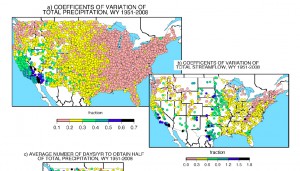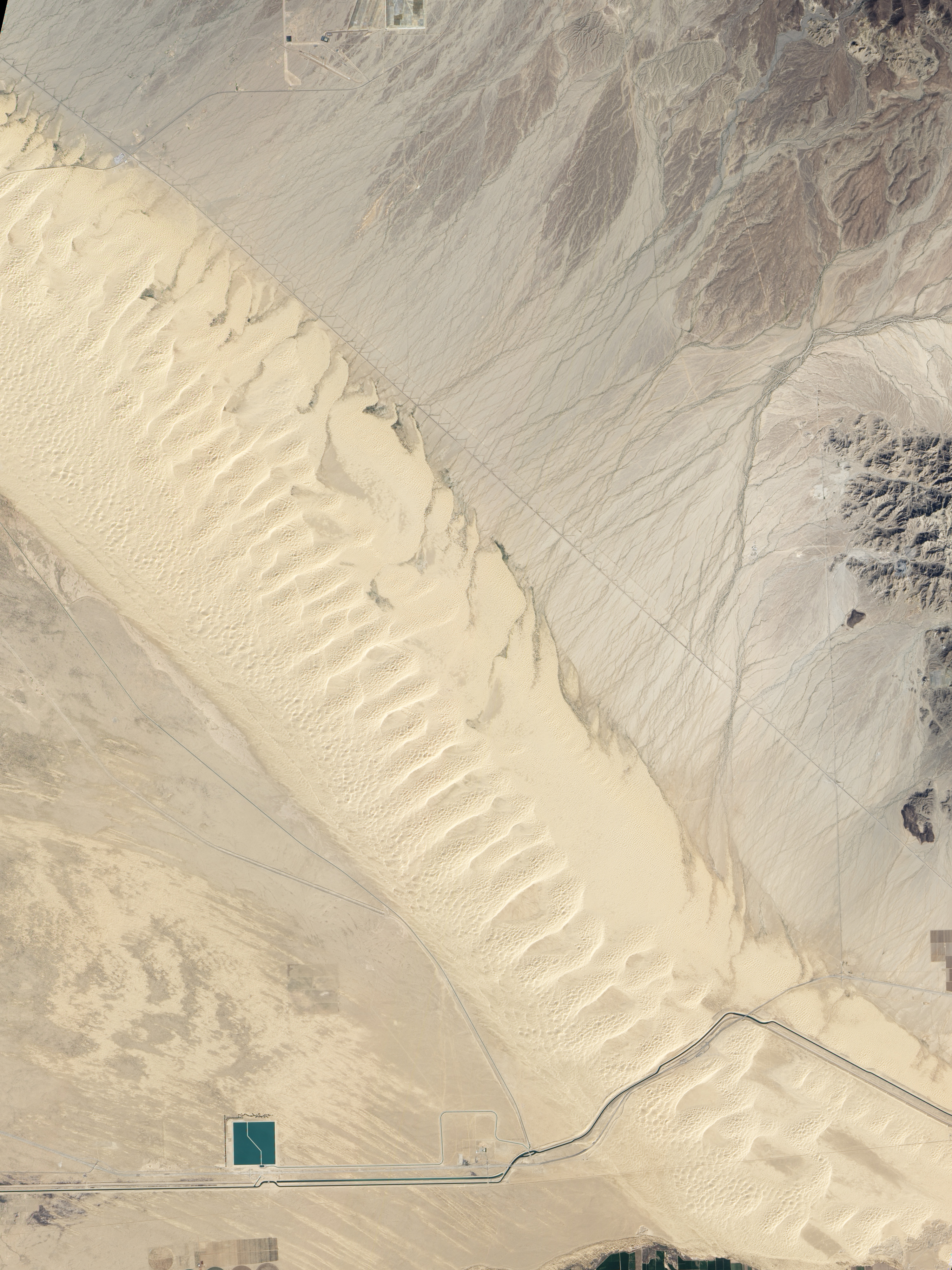Part of my standard schtick when I talk about water management in the arid southwest is an explanation of the problem of variability as it relates to aridity. It is so obvious that it almost goes without saying that life in an arid climate poses climate problems because it’s dry. But the more subtle problem, as I like to point out, is variability. If it’s extremely dry, but in a consistent way, you can plan for it – building your water infrastructure (flood control, irrigation, water distribution, etc.) based on that consistent amount. But extreme variance from year to year (and, really, on all sorts of different time scales) is what poses the real problem.
In addition, arid climates in general also tend to be more highly variable climates.
So I thought I was hip to the problem variability poses for water management, and that the heart of the problem was out here in the arid interior Southwest, where I live.

US Precipitation and Runoff Variability
But this paper by Mike Dettinger* suggests I didn’t fully grasp the issue, especially as it relates to California. Dettinger and colleagues make two important points. First, variability (they use the “coefficient of variability” as their measure, which for wonks is the standard deviation divided by the mean) is higher in California than in the rest of the West, as this map shows. (The pink east has the least variability, yellows are more variability and the blues and blacks are the highest variability.)
At the core of many of California’s water issues is its generally high degree of year-to-year and within-year precipitation variability…. Clearly precipitation and, somewhat less so, streamflow in California are proportionally more variable from year to year than are flows in other parts of the West Coast, and broadly more variable than most parts of the western and eastern states. Only some rivers contributing to the Mississippi from the west and in eastern Texas are similarly variable. The larger variations in California necessitate heroic levels of management of the State’s water resources to accommodate wider swings of wet and dry years than in any other state.
Their second point is that California, more than other places, gets a disproportionate share of its water from a handful of single-storm events.
If just a couple of storms do not arrive in California, or yield significantly less precipitation than
needed, in a given year, that year’s precipitation total and water resources suffer disproportionately, compared to other regions. Alternatively a relatively few large or “extra” storms may result in a particularly wet year.
* Dettinger, M.D.; Ralph, F.M.; Das, T.; Neiman, P.J.; Cayan, D.R. Atmospheric Rivers, Floods and the Water Resources of California. Water 2011, 3, 445-478.



